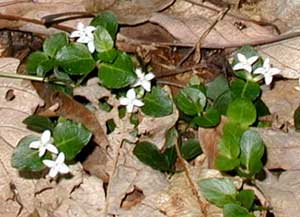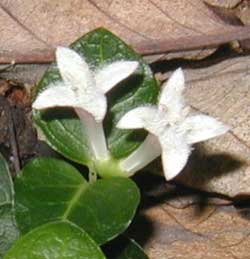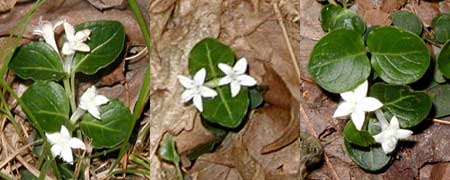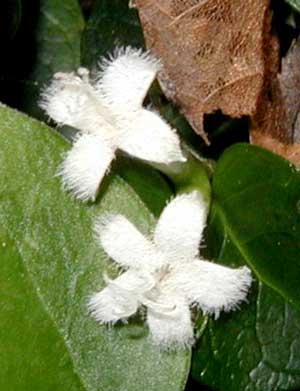Partridgeberry, Mitchella repens, blooming along woodland paths in central Pennsylvania lends a bit of color to the brown forest floor. Dark green foliage, accented here and there with white or light-colored veins, still bears crimson berries left over from last year.

The white, tubular-shaped flowers come in pairs at the ends of creeping branches along the ground. The fringy blooms coalesce to create a single, edible fruit in the fall, which can last the whole year long.

Nature guide books indicate that Partridgeberry, also known as Squaw Vine, has 4 regular parts, and so, most of us would look for flowers having 4 petals, 4 stamens, and so on, if we were looking for a specimen. Indeed, a majority of the partridgeberry flowers do have four petals, but I found quite a few examples having five petals.


Growing along the same path, but not on the same plant, and separated by some 50 feet or more, this large grouping of five-petaled partridgeberry illustrates one of the tenets of nature that states diversity rules. Perhaps this small freak of nature will some day benefit the species to it’s continued survival.

1 thought on “Partridgeberry, a.k.a. Squaw Vine, Beautifies Our Pennsylvanian Woodland Paths”